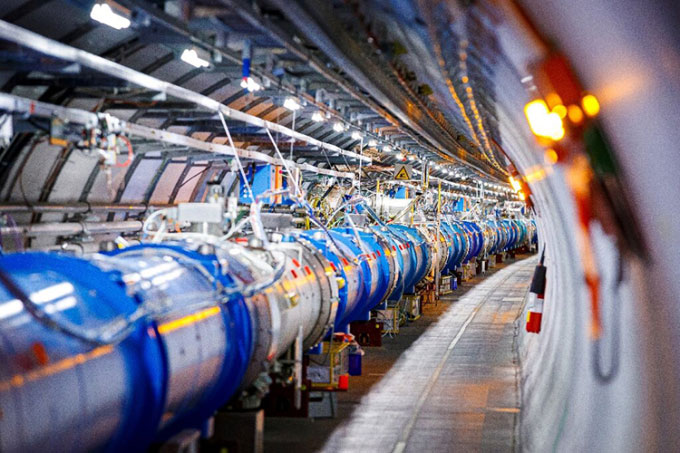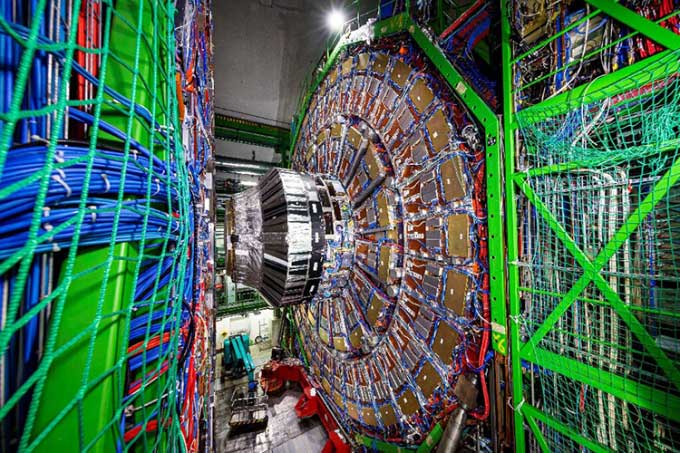The World’s Most Powerful Particle Accelerator, the Large Hadron Collider, Prepares for Next Run After Three-Year Upgrade Break.
In a press conference last week, the European Organization for Nuclear Research (CERN) announced that the Large Hadron Collider (LHC) is gearing up for its third run, which will last nearly four years and operate at a record energy level of 13.6 trillion electronvolts (eV).

The Large Hadron Collider beneath the Switzerland-France border. (Photo: AFP)
It will send two proton beams—particles found in the nucleus of an atom—in opposite directions at speeds close to the speed of light around a circular tunnel that is 27 kilometers long, buried 100 meters below the Switzerland-France border.
The results of the collisions will be recorded and analyzed by thousands of scientists as part of a series of experiments, including ATLAS, CMS, ALICE, and LHCb, aimed at enhancing the exploration of dark matter, dark energy, and uncovering other fundamental mysteries of the universe.
“We aim to produce 1.6 billion proton-proton collisions per second,” said Mike Lamont, head of CERN’s accelerator and technology department, to AFP.
At this time, the proton beams will be focused down to less than 10 microns to increase collision rates. For comparison, a human hair is about 70 microns thick. The new energy level will allow CERN to delve deeper into the study of the Higgs boson—a fundamental particle in the Standard Model of physics that the LHC first discovered on July 4, 2012.
CERN Director General Fabiola Gianotti, who first announced the discovery of the Higgs boson a decade ago, emphasized that this particle is related to some of the most profound open questions in fundamental physics today.

The LHC resumed experimental operations in April 2022 after a three-year hiatus for upgrades. (Photo: AFP)
Compared to the first run when the LHC discovered the Higgs boson, this new run will have 20 times more collisions. “This is a significant increase, paving the way for new discoveries,” Lamont shared.
Joachim Mnich, head of CERN’s research and computing department, added that there is still much to learn about the Higgs boson.
Past experiments have determined the mass of the Higgs boson, but Gian Giudice, head of CERN’s theoretical physics department, stated that observing particles is only part of the work.
“Particle physics is not just about answering how questions; our goal is to understand why,” Giudice added.
After this third run, the LHC will take a break before returning to operation in 2029 with a new name: the High-Luminosity LHC, which will increase the number of detectable events to ten times.
Additionally, scientists are planning to develop a new machine called the Future Circular Collider—a circular tunnel 100 kilometers long with an enormous energy level of up to 100 trillion eV.


















































